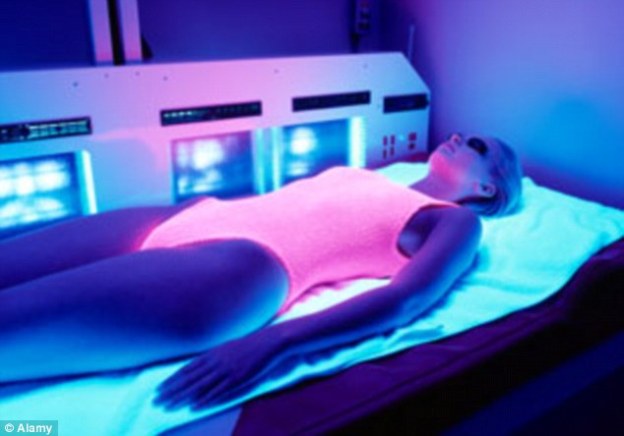Summer’s here and that means many people will be outside a lot, particularly after a wet spring in much of the country. But how many will protect themselves against the sun’s harmful rays? A dermatologist says not nearly enough.
A University survey of young Americans, ages 12 to 18, found that only a third regularly use sunscreen. The survey, published last year in the journal Pediatrics, also found that 83 percent had at least one sunburn the previous summer and 36 percent had three or more. And it’s not all happening outside, or in summer.
Ten percent of all those surveyed — and 14 percent of girls — also said they’d used indoor tanning. Spencer says those numbers only increase in the college years, especially for young women.
Does it really matter if I get a sunburn every once in a while?
Yes, it does. The likelihood of developing skin cancer and wrinkles increases with the more sun you get. But even just a few bad sunburns increases the risk of developing melanoma, the most deadly form of skin cancer.
This is particularly true when you’re younger. It seems that, before age 20, our skin is much more sensitive to the harmful effects of the sun than when we’re older.
What’s the best way to treat a sunburn?
It may take up to 24 hours before the full damage of a sunburn is visible. The two most common types of burns are first degree burns and second degree burns.
First degree sunburns cause redness and will heal, possibly with some peeling, within a few days. These can be painful and are best treated with cool baths and bland moisturizers or over-the-counter hydrocortisone creams. Taking aspirin may lessen the pain. Avoid the use of “-caine” products (such as benzocaine) which may cause sensitivity.
Second degree sunburns blister and can be considered a medical emergency if a large area is affected. When a burn is severe, accompanied by a headache, chills or a fever, seek medical help right away.
No matter what kind of burn you get, be sure to protect your skin from the sun while it heals and take better precautions in the future.
Is there any way to tell if my skin has been damaged?
If you’ve tanned or burned, you’ve already damaged your skin. A burn is a clear sign of damage. A tan, in fact, is the body trying to protect itself from more damage.
If I only tan and don’t burn, does that mean I won’t get skin cancer?
No. When our skin is damaged by ultraviolet radiation from the sun, the skin senses that damage and makes the brown pigment melanin to protect itself from more harm. Melanin blocks the ultraviolet rays from entering the skin.
But to develop a tan, you must damage your skin first. So there is no way to tan safely.
Is tanning at indoor salons any safer or better for my skin?
No. Sunlight contains two types of ultraviolet light: UVA and UVB. The UVB is primarily responsible for a sunburn. But both types of UV radiation cause wrinkles and skin cancer.
Indoor tanning salons use devices that give off ultraviolet radiation — a mixture of both UVA and UVB that’s meant to mimic the sun. So, whether you tan at the beach or in the tanning salon, you’re damaging your skin.
Below is an Indoor tanning machine:
This is an indoor tanning machine.
Sunbeds are twice as likely to cause skin cancer than a holiday in the Mediterranean, scientists warn.
They say the risks posed to users – who mainly comprise young women – are far higher than previously thought.
The experts found that on average sunbeds in England are emitting harmful radiation that is twice as high as the recommended safe levels.
They have calculated that a ten minute session on a sunbed is twice as likely to cause skin cancer than spending the same time in the midday sun in the Mediterranean.
Are creams and other products that produce a fake “tan” safe for your skin?
Overnight or instant “tans” are dyes that color the outermost layer of the skin. The dye usually lasts four to five days and is completely harmless. But remember, it does not protect you from the sun.
How to Get a Good Healthy Tan Bathing in the Sun
Sunbathing by the swimming pool or sitting on the beach is sometimes preferred to other laborious safe tanning methods, because it makes for a pleasant, even relaxing pastime. Exfoliate and moisturize your skin before going to the beach – this way you create a smooth, ready-for-tan skin. You shouldn’t wear any makeup or perfume.
Apply a broad spectrum SPF protective lotion every 30 minutes or right after getting out of the water. For an even, healthy tan change posture every 15 to 20 minutes, and stay no longer than 3 hours in the morning or in the afternoon, when the sun’s effect is less harmful.
How to Get a Healthy Tan Fast
You don’t want to wait until your next self-tanning session? You can get a healthy tan fast by combining self-tanning products with short sunbathing sessions. This way, your face tan will be the healthy base tan for your glowing bronze to develop on. You should wait for the self-tanning products to set in, so it’s best to go the following day. Be sure to apply a SPF sunscreen, as self-tanning sprays won’t get you a healthy tan fast, they will get you sunburned. Sun protection is vital!
source: nbcnews.com




